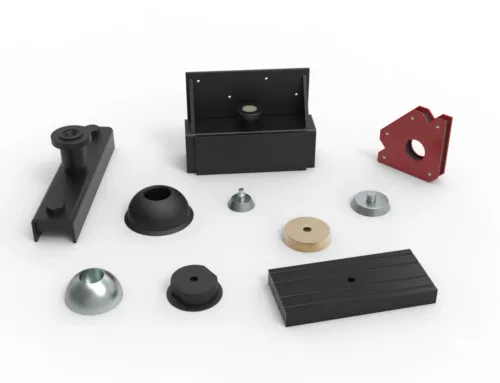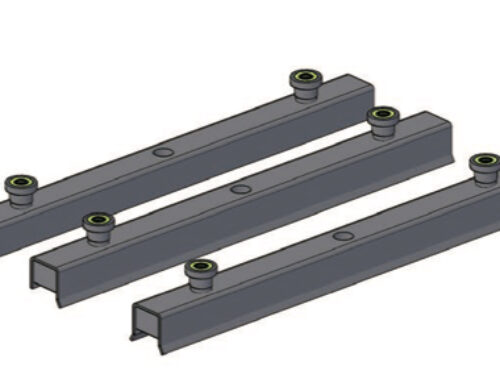If you’ve ever shopped for neodymium magnets, you’ve probably seen grades like N52 and N35—and wondered, what’s the real difference?
Here’s the truth: the grade you choose can make or break your project. N52 magnets are among the strongest you can buy, delivering maximum pull force in a compact size. N35 magnets, on the other hand, offer solid performance at a lower cost and with better availability for everyday applications.
Whether you’re designing a high‑precision motor, building a prototype, or sourcing components for mass production, knowing how N52 vs N35 magnets compare will save you money, time, and headaches.
Let’s break it down—quickly, clearly, and with the details you actually need.
Understanding Neodymium Magnet Grades
Neodymium magnets come in different grades like N35, N42, N52, and more. The grade is essentially a quick reference to a magnet’s maximum strength and energy density.
When you see N35 or N52, the “N” stands for neodymium, and the number represents the maximum energy product (BHmax) measured in Mega Gauss Oersteds (MGOe). Simply put: the higher the number, the stronger the magnet—assuming the size is the same.
What the grades mean
A magnet’s grade is determined by three key magnetic properties:
- Coercivity (Hc) – The magnet’s ability to resist demagnetization. Higher coercivity means the magnet is harder to weaken.
- Remanence (Br) – How much magnetic field remains in the magnet once it’s magnetized. Higher remanence means stronger surface field strength.
- Maximum Energy Product (BHmax) – The density of magnetic energy. This is the main figure of merit for comparing magnet strength.
Typical applications for neodymium magnets
Because of their high magnetic strength in a compact size, neodymium magnets are used across different industries:
- Consumer electronics – Headphones, speakers, phone mounting systems
- Industrial machinery – Motors, wind turbines, magnetic separators
- Medical equipment – MRI scanners, precision holding mechanisms
- Automotive applications – Electric vehicle motors, sensors
- Everyday tools – Magnetic clasps, fasteners, and hobby projects
In short, the grade number matters when matching magnet strength to your application’s needs, so understanding it is key before deciding between N52 vs N35.
Technical Comparison N52 vs N35
When you’re looking at N52 vs N35 neodymium magnets, the key differences come down to strength, stability, and cost. Here’s a quick breakdown of the main factors.
Magnetic Strength and BHmax
- N52 magnets are the strongest commercial-grade neodymium magnets available.
- BHmax (maximum energy density) is about 52 MGOe for N52 and 35 MGOe for N35.
- This translates to a noticeably higher pull force for N52 in the same size magnet.
| Grade | BHmax (MGOe) | Relative Strength |
|---|---|---|
| N35 | ~35 | Standard |
| N52 | ~52 | Very High |
Size and Shape Considerations
- If you need high strength in a small space, N52 is the go-to.
- For large magnets where size gives natural strength, N35 can be more cost-effective.
- Both grades come in discs, blocks, rings, and custom shapes.
Temperature Tolerance and Thermal Stability
- Standard N52 and N35 both start losing strength at around 80°C (176°F).
- Higher temperature grades (e.g., N35SH) can handle more heat, but that’s a different spec than just “N35” or “N52.”
Resistance to Demagnetization and Corrosion
- Both grades resist demagnetization well in normal use.
- Neodymium magnets in either grade need a protective coating (nickel, epoxy, zinc) to prevent corrosion, especially in humid or salt-air environments.
Mechanical Properties and Fragility
- Both N35 and N52 are brittle ceramics despite their strength.
- They can chip, crack, or break if snapped together or dropped.
- Handle with care — bigger and stronger magnets like N52 can pinch skin or cause injury if mishandled.
Cost Analysis
When it comes to price, N35 magnets are generally much more affordable than N52 magnets. This is because N52 magnets require a higher grade of raw materials and tighter manufacturing tolerances to reach their maximum energy product, which drives up production costs.
Typical Price Range
- N35: Lower cost, more budget-friendly for bulk orders or general-purpose use.
- N52: Significantly higher per unit, especially in larger sizes or custom shapes.
Actual pricing varies by size, coating, and order quantity, but on average, N52 magnets can cost 30–60% more than equivalent N35 magnets.
Cost vs Performance
- N52 offers the highest magnetic strength commercially available, which can reduce magnet size in certain designs while maintaining the same pull force. This can save space but comes with a higher upfront cost.
- N35 provides solid performance for applications that don’t push magnetic strength to the limit, delivering better cost-per-strength value for many standard uses.
When to Choose N35 Over N52
- Large production runs where cost control is crucial
- Applications where ultra-high magnetic force isn’t needed
- Uses in non-critical environments like DIY projects, basic closures, displays, and some sensors
When to Choose N52 Over N35
- Precision applications where size reduction is a priority
- High-performance motors, aerospace equipment, and medical devices where every bit of strength matters
- Situations where magnets must operate efficiently in tight spaces without increasing component size
For buyers, the decision often comes down to whether the added strength of N52 justifies its premium cost. If your project doesn’t demand maximum magnetic performance, N35 may be the more cost-effective choice, especially for large-volume needs.
Application Suitability
Where N52 Magnets Work Best
N52 magnets are the strongest grade of neodymium commonly available. They’re used where maximum magnetic strength is needed in a small space. In the U.S., industrial buyers often choose N52 for:
- High-performance motors and generators in aerospace, robotics, and EVs
- Precision medical devices that require a compact yet powerful magnetic field
- Aerospace systems where weight is critical but magnetic performance can’t be compromised
Their high pull force makes them ideal in applications where other grades can’t deliver enough holding power without increasing size.
Common Uses for N35 Magnets
N35 magnets still pack plenty of strength for everyday uses, and they’re a cost-effective choice for projects that don’t need maximum grade performance. Typical applications include:
- Magnetic fasteners in retail displays or furniture hardware
- Sensors and switches in consumer electronics and appliances
- Educational kits and crafts where a balance of strength and safety is important
N35 is widely used because it offers a good balance between cost, strength, and availability, especially for larger magnet sizes.
Factors That Drive the Choice
When deciding between N52 and N35, most U.S. buyers weigh:
- Size constraints — if magnet space is limited, higher grades like N52 deliver more power in less volume
- Strength needs — higher pull force means stronger grip or higher efficiency in motors
- Budget — N35 is usually more affordable, especially in large quantities
- Operating environment — high temperatures, moisture, or chemical exposure can affect both types, but choice of coating and grade can improve performance
If you need a detailed breakdown of how strength and application relate, you can check our neodymium magnet grades comparison to see where each grade fits best.
Purchasing Considerations and Tips from NBAEM
When buying N52 or N35 neodymium magnets, sourcing from a trusted supplier matters just as much as picking the right grade. At NBAEM, the focus is on delivering magnets that meet spec every time, so you know you’re getting exactly what you paid for.
Sourcing Genuine N52 and N35 Magnets
Counterfeits and mislabeled grades are common in the market. NBAEM uses grade testing, BHmax verification, and full material traceability to ensure each magnet is truly N52 or N35. You’ll see consistent pull force and durability across batches.
Manufacturing Process and Performance
The way a magnet is pressed, sintered, and coated affects how it performs and lasts. NBAEM uses controlled manufacturing lines to keep density high, reduce micro-cracks, and get maximum energy out of the material. Precise magnetizing equipment ensures the strength matches the spec sheet.
Customization Options
For U.S. buyers who need magnets for specific designs, NBAEM offers:
- Custom shapes: discs, blocks, rings, arcs, countersunk holes
- Different coatings: nickel-copper-nickel, epoxy, zinc, gold for better corrosion protection
- Size ranges: from tiny millimeter-scale magnets to large industrial blocks
- Tuned magnetic strength based on your application needs
Quality and Reliability Assurance
NBAEM runs strict quality control:
- Magnetic property testing for every batch
- Dimensional checks with tight tolerances
- Salt spray and humidity tests for coating durability
- Inspection certificates provided on request
FAQs About N52 and N35 Magnets
Can N52 magnets replace N35 magnets directly
Not always. N52 magnets are much stronger than N35, so swapping them could cause alignment, fit, or safety issues in a design. If a product was built for N35’s pull force, using N52 might create too much holding power or even damage nearby components. Always check the size, gap, and force specs before replacing. In sensitive devices (like sensors or motors), the extra magnetic field from N52 could interfere with performance.
How to handle and store neodymium magnets safely
- Wear gloves — they can pinch skin easily.
- Keep them apart — strong pull can cause them to snap together and chip or shatter.
- Stay away from electronics — they can wipe memory or damage screens.
- Use spacers like cardboard or plastic sheets for storage.
- Store in a dry place to avoid corrosion, even if coated.
Lifespan and maintenance tips for magnets
- Neodymium magnets can last decades if handled correctly.
- Avoid dropping or letting them slam together — they’re brittle and can crack.
- Protect from extreme heat; high temps can weaken their strength permanently.
- Keep them clean and dry — moisture and salt air speed up corrosion.
- For long-term storage, keep them away from strong opposing magnets or high magnetic fields to prevent gradual demagnetization.





[…] detailed guidance on magnet performance and material grades like NdFeB, check out our comparison of N52 vs. N35 magnet grades, which dives into how material choice affects field strength and […]